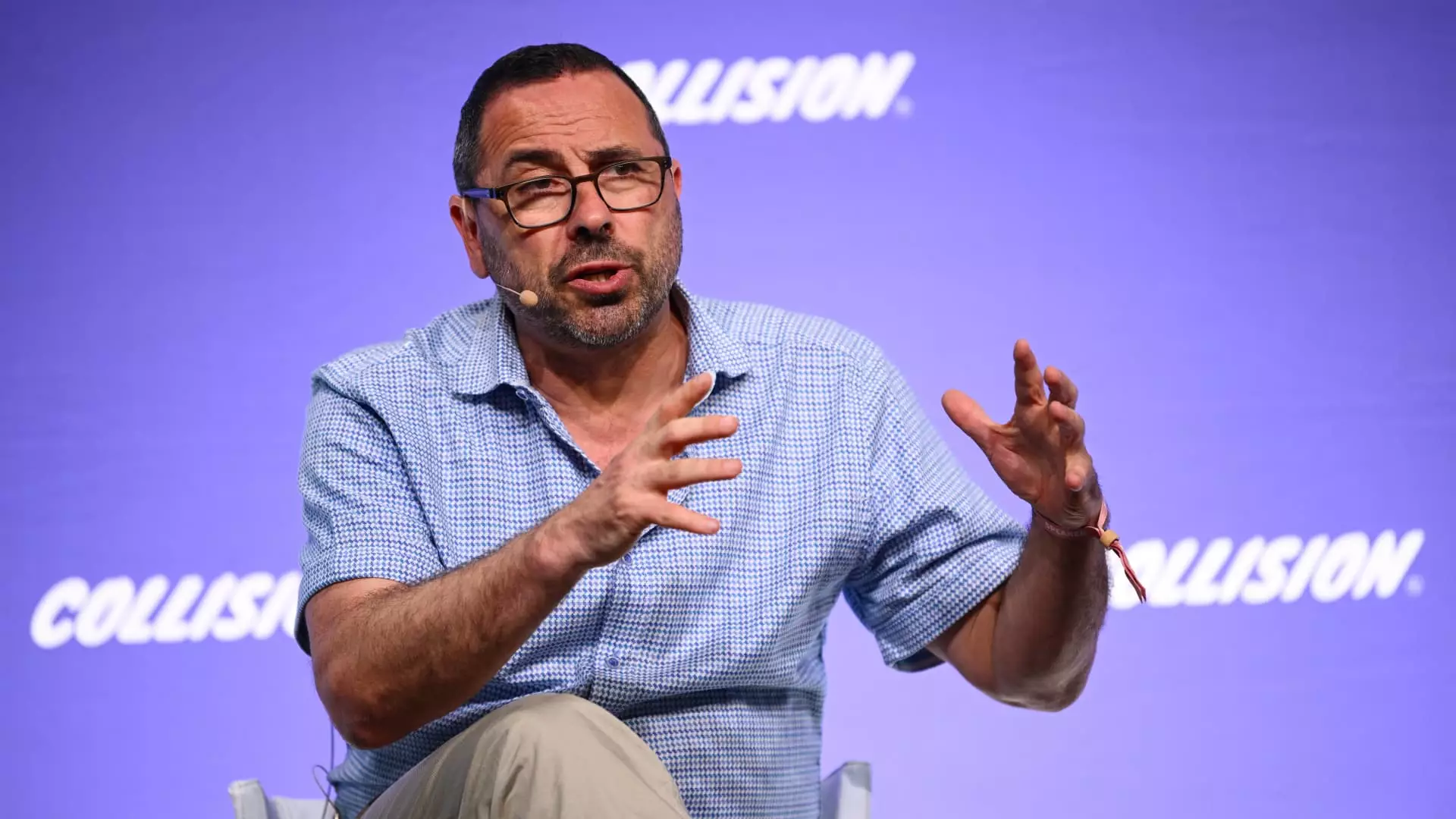The landscape of artificial intelligence (AI) is continuously evolving, catalyzed by the phenomenal success of industry giants like Nvidia. Amidst this frenzy, Cerebras Systems—a tech company specializing in AI chips—has emerged as a significant player. However, as it moves to position itself for an initial public offering (IPO), Cerebras must navigate treacherous waters, marked by unique advantages and conspicuous vulnerabilities.
Cerebras, founded in 2016, is betting big on leveraging its cutting-edge technology to make waves in the AI semiconductor market. The company made headlines by introducing its first processor to much acclaim, positioning itself as a possible competitor to Nvidia’s GPUs, which have become synonymous with AI training efficiency. As the AI sector burgeons, investors are scrambling to find opportunities to capitalize on the potential of companies like Cerebras, especially following Nvidia’s staggering valuation of approximately $3.3 trillion. Valued at $4 billion in 2021, Cerebras hopes to double that figure in its upcoming IPO.
The backdrop of an investor appetite for AI technologies creates an ideal environment for Cerebras to thrive. With revenue surging to $136.4 million in the first half of 2024, the company’s growth trajectory appears favorable. Notably, Cerebras claims to have secured pre-orders of systems and services worth an astounding $1.43 billion, further enhancing its appeal to potential investors.
Despite promising growth statistics, the road to an IPO is fraught with challenges for Cerebras. Chief among these is customer concentration; a single client, G42 from Abu Dhabi, accounts for an overwhelming 87% of the company’s revenue. This dependency raises red flags, especially when coupled with their agreement for a colossal purchase commitment. Although G42 is backed by tech titan Microsoft, the concentrated nature of Cerebras’ revenue sources creates a precarious position, magnifying any business risk they may face.
Furthermore, Cerebras’ relationship with G42 complicates its standing in the eyes of U.S. regulatory bodies. The Committee on Foreign Investment in the United States (CFIUS) is reviewing the potential implications of G42’s significant stake in Cerebras, especially given that G42 has historical ties with Chinese firms. While Cerebras asserts that it doesn’t believe CFIUS jurisdiction applies to G42’s investment, the unpredictability of regulatory oversight looms large over its IPO aspirations.
Investor sentiment toward Cerebras is a complex interplay of optimism and caution. Wall Street’s top investment banks, historically instrumental in facilitating tech IPOs, have shied away from underwriting Cerebras’ IPO. Heavyweights like Goldman Sachs and Morgan Stanley have reportedly distanced themselves from the deal over concerns relating to revenue dependency and the implications of foreign investment. Instead, the IPO is being led by Citigroup and Barclays, neither of which have a reputation for leading marquee tech offerings.
This shift reflects broader challenges in the IPO landscape, particularly for tech ventures. There’s a growing reluctance among investors to commit capital to companies entangled in complex foreign investment scenarios or that demonstrate high levels of customer concentration. Compounding these challenges are Cerebras’ historic and jurisdictional issues surrounding its CEO, Andrew Feldman, who has a past conviction related to accounting improprieties.
Nonetheless, Cerebras’ technology holds promise. The company has developed the WSE-3 chip, which boasts 4 trillion transistors—an impressive feat that the company claims makes it the fastest AI processor on the planet. Despite facing losses, the company is reportedly close to break-even on an operating basis when excluding stock-based compensation. Excitement from retail investors, like Jim Fitch, underscores the potential that many still see in Cerebras, pointing to its innovations and performance benchmarks as key attractions in a crowded market.
No matter the obstacles, Cerebras still possesses pathways to a successful IPO, particularly given the insatiable demand for AI infrastructure among investors. Even amid regulatory scrutiny and skepticism regarding its business model, the allure of cutting-edge technology can be a powerful motivator for a sizeable IPO.
While Cerebras operates within a tantalizing landscape that is ripe for investment, significant hurdles must be surmounted before it can achieve a successful public offering. The future of Cerebras—like the trajectory of AI itself—remains uncertain, yet filled with possibility. Only time will tell if this venture can effectively translate its innovations into lasting market success.

